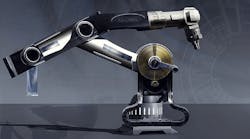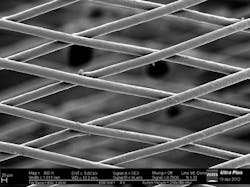This article was originally published on MedicalDesign.com in May 2014.
Applying a coating to a medical device or instrument can improve the device’s performance and reduce potential side effects. As recent history shows, selecting the right coating material and controlling coating processes in ways that are reproducible can be challenging and fraught with obstacles. Flaking, lifting, or delamination of the coatings, as well as inconsistent and non-uniform coatings on a device surface, are potential failure modes that can result in recalls and risks to patient safety. The solution is developing and validating a uniform and repeatable process and then putting the controls in place to monitor and ensure the processes are consistently executed.
Meeting Specifications
Today’s coating specifications on medical devices often call for high precision with tight tolerances of micron-thin films. These coatings must be applied at controlled thicknesses and coverages, which requires them to be metered and measured to exactness. However, accurately controlling the distribution of the coating to three-dimensional surfaces or ultra-small surfaces can be very complex.
Coated stent mesh as seen via scanning electron microscope.
Conventional coating systems and processes are often incapable of this level of control and uniformity. Robotic coating systems, on the other hand, are the “gold standard” in coating control, repeatability, and process efficiency. The robot is the “driver” of the system, capable of repeating a specific process, consistently delivering the exact amount of material to a part surface, while controlling all the process parameters. Robots can be programmed to coat almost any part shape, no matter how complex, at any speed needed for efficient processing.
When adding a coating to a device, engineers and device manufacturers must keep in mind that the coating and application processes are rarely an off-the-shelf solution. Each is unique and must be customized for the specific device design, dimensions, coating specifications, and equipment. Designing, testing, and validating coating processes are just the first steps. Controlling the process to ensure reproducible results requires know-how and the right equipment.
Developing and validating a uniform coating process involves three daunting tasks:
(1) selecting the right coating material for the application,
(2) specifying and testing the application parameters needed to deliver the coating specifications, and
(3) designing the coating system; production equipment, throughput requirements, process parameters and controls to ensure the repeatability of the coating process.
These steps become what is known as the “Coating Recipe.” Each recipe is specifically created for the customer’s unique application and requirements.
Once the Coating Recipe is optimized, tested, and validated, it then can be programmed into the robot to deliver the exact metered and mixed material, at a set film thickness, to correct locations on the part’s surface with little variation. Any change, small or large, in any variable or parameter can affect coating results.
Electrostatic atomizer used in a total coating system.
Selecting the Right Coating Material
Achieving the coating specifications and results starts with selecting the right coating material. A critical part of the selection process is understanding the properties, formulations, and characteristics of the coating materials, and how each behaves with the application process.
Many coatings are designed for desired properties and performance to be used in a broad range of applications. For example, PTFE provides excellent electrical properties, non-sticking, and low-friction properties and dielectric characteristics for use in many industrial applications. PTFE is also a common coating used on medical devices and instruments to reduce friction and for dielectric properties. However, a formulation that works well for an industrial application and specifications may not transfer as easily to medical applications and specifications requiring micron-thin films, very low flow rates, high precision, and ultra-smooth surfaces.
Most coatings are formulated as powder or liquid dispersions. Liquid dispersions are either water-based (aqueous) or solvent-based. When applying liquid dispersions, viscosity, flow properties, and particle size are critical factors for film build and uniformity. Viscosity and other properties may need to be adjusted for certain application processes (dip vs. spray), or to account for manufacturing environmental changes such as humidity or temperature. Other important material properties that need to be considered include shear sensitivity, flash points, melt points, volatility, conductivity, resistivity, wetting and flow characteristics, surfactants and pigments, particle size, and curing temperatures and times—plus regulatory and environmental issues.



